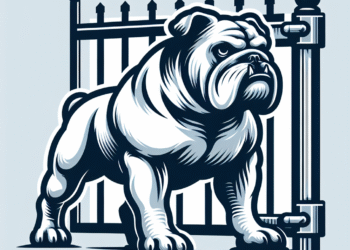From Aggression to Action: How to Design a Positive Workout Plan for Bullies
Introduction
Bullying is a complex issue that often stems from underlying personal conflicts, insecurities, or behavioral patterns. For some individuals, aggression can manifest physically, socially, or verbally. However, these aggressive tendencies can be channeled into positive actions through structured physical activities, ultimately promoting personal growth and emotional health. A well-designed workout plan can serve as an effective outlet for pent-up energy and frustration, helping to transform negative behaviors into constructive ones.
Understanding the Root Causes of Aggression
Before developing a workout plan, it is crucial to understand the motivations behind bullying behavior. Factors such as:
- Low Self-Esteem: Individuals may bully to compensate for their insecurities.
- Stress and Anxiety: External pressures can lead to frustration, which might be expressed through aggression.
- Learned Behavior: Exposure to violent or aggressive behavior at home or in social settings can influence actions.
Recognizing these factors is vital to creating a positive workout plan that addresses both physical and emotional needs.
Designing a Positive Workout Plan
1. Set Clear Goals
Establishing specific, measurable, achievable, relevant, and time-bound (SMART) goals is essential. For instance, rather than simply aiming to "get fit," goals could include:
- Reducing impulsive reactions in social situations.
- Building physical strength and stamina.
- Improving teamwork skills through group exercises.
2. Incorporate Physical Activities
A variety of physical activities can cater to different interests and abilities. Some options include:
- Team Sports: Sports like basketball or soccer promote teamwork and cooperation, providing a constructive way to channel aggressive energy.
- Martial Arts: Disciplines like karate or judo teach self-control and respect, enabling individuals to learn how to manage their aggressiveness while gaining physical fitness.
- Fitness Classes: Group classes, such as kickboxing or circuit training, can be invigorating and allow for social interaction in a positive environment.
3. Emphasize Emotional Wellness
Incorporate elements that promote emotional well-being alongside physical fitness. Activities such as:
- Yoga: Yoga helps improve mental clarity, focus, and emotional regulation.
- Mindfulness Practices: Including techniques for mindfulness can teach individuals how to recognize their feelings and respond constructively, rather than react with aggression.
4. Develop Social Skills through Teamwork
Having a focus on teamwork can help those with bullying tendencies learn to work collaboratively. Structured group activities can foster:
- Communication Skills: Exercises can be designed to focus on verbal and non-verbal communication.
- Conflict Resolution: Group discussions can help teach how to approach and resolve conflicts non-aggressively.
5. Provide Mentorship and Guidance
Involvement of mentors, trainers, or counselors can play a significant role in ensuring accountability and support. Mentors can:
- Offer regular feedback on progress.
- Provide encouragement and recognition of improvements.
- Help identify and address ongoing issues of aggression.
Evaluating Progress and Making Adjustments
Regular evaluation of goals and progress will help keep the workout plan relevant and effective. Adjustments may be needed based on:
- Observable changes in behavior.
- Feedback from mentors, peers, or coaches.
- Individual feelings about the types of exercises or activities.
Creating a Supportive Environment
Finally, fostering a encouraging environment is essential. This includes:
- Encouraging Positive Reinforcement: Celebrating successes and improvements, no matter how small.
- Promoting Inclusivity: Ensure that activities are inclusive and accessible to everyone, regardless of skill level or experience.
Conclusion
Transforming aggression into action can have lasting positive effects on individuals struggling with bullying behaviors. With a thoughtfully designed workout plan that emphasizes emotional wellbeing and social skills, it is possible to redirect negative behavior into positive growth. By promoting fitness, teamwork, and emotional awareness, society can move toward a future where aggression can be recognized and transformed into productive action, ultimately benefiting both individuals and the community at large.














